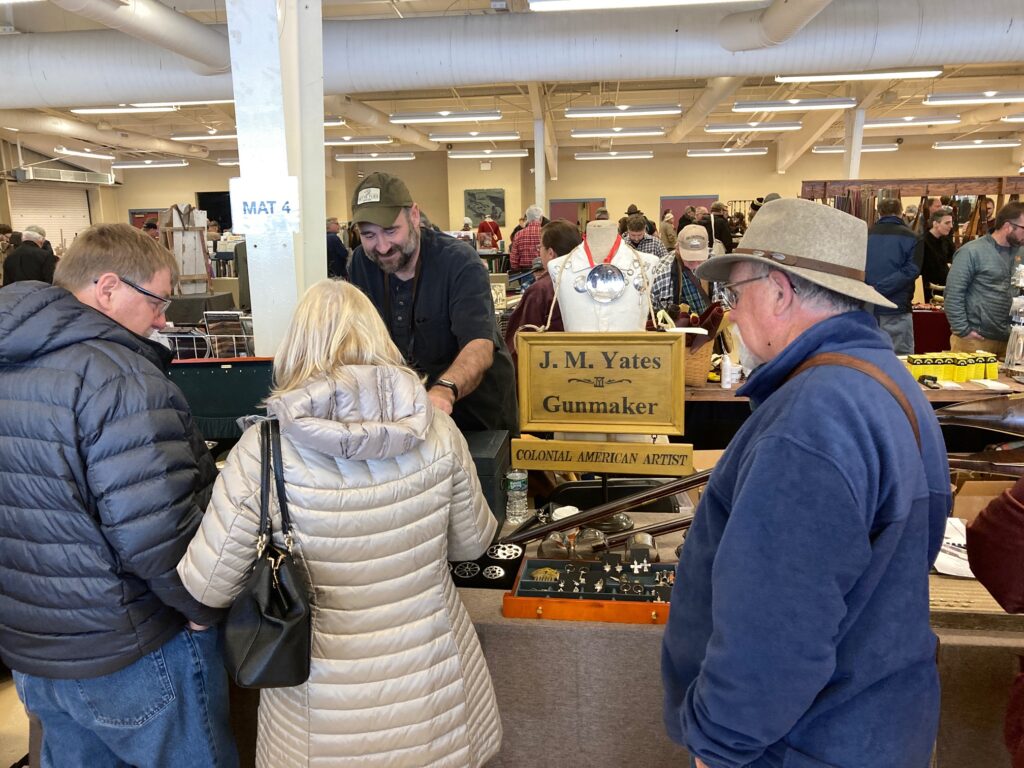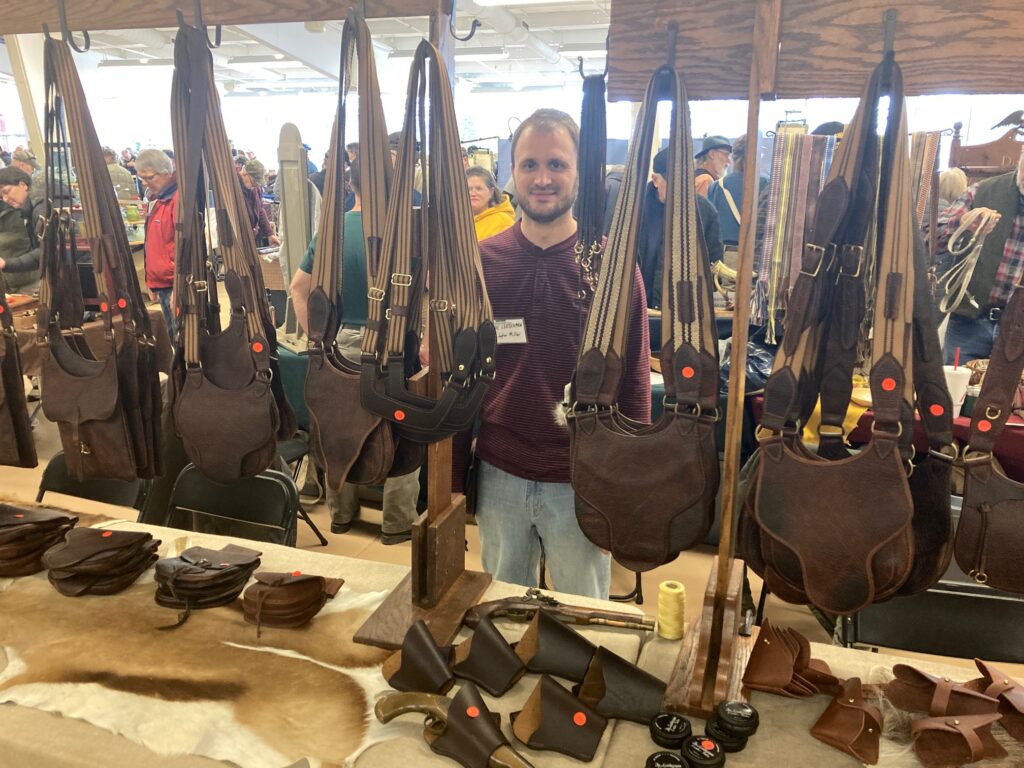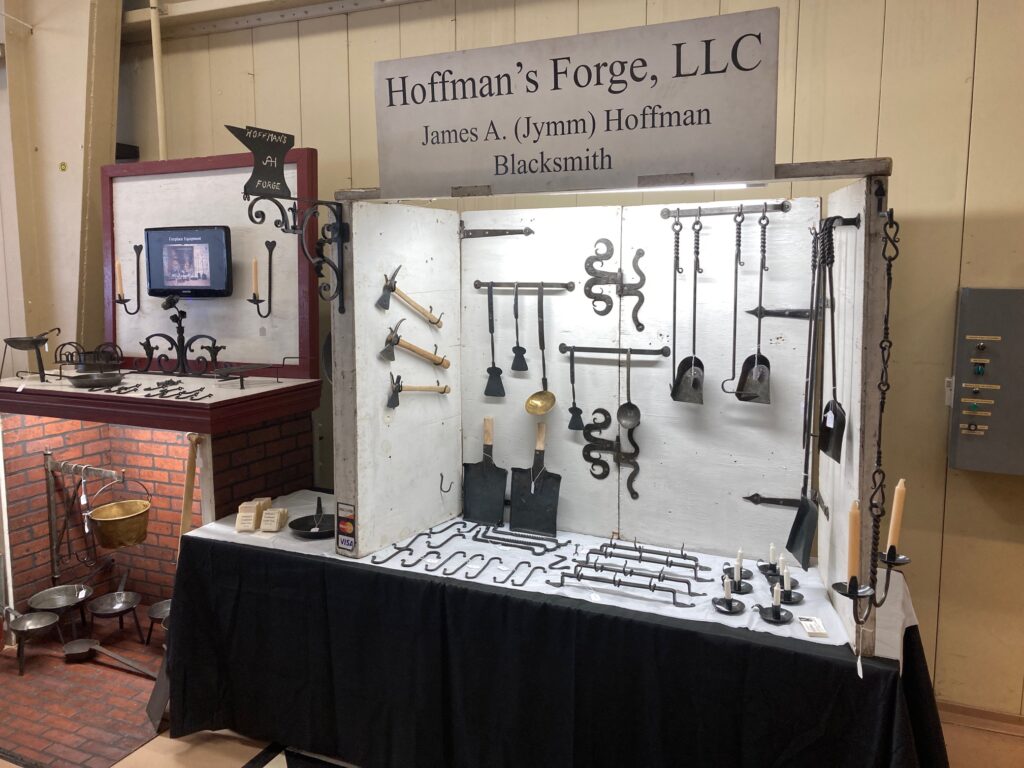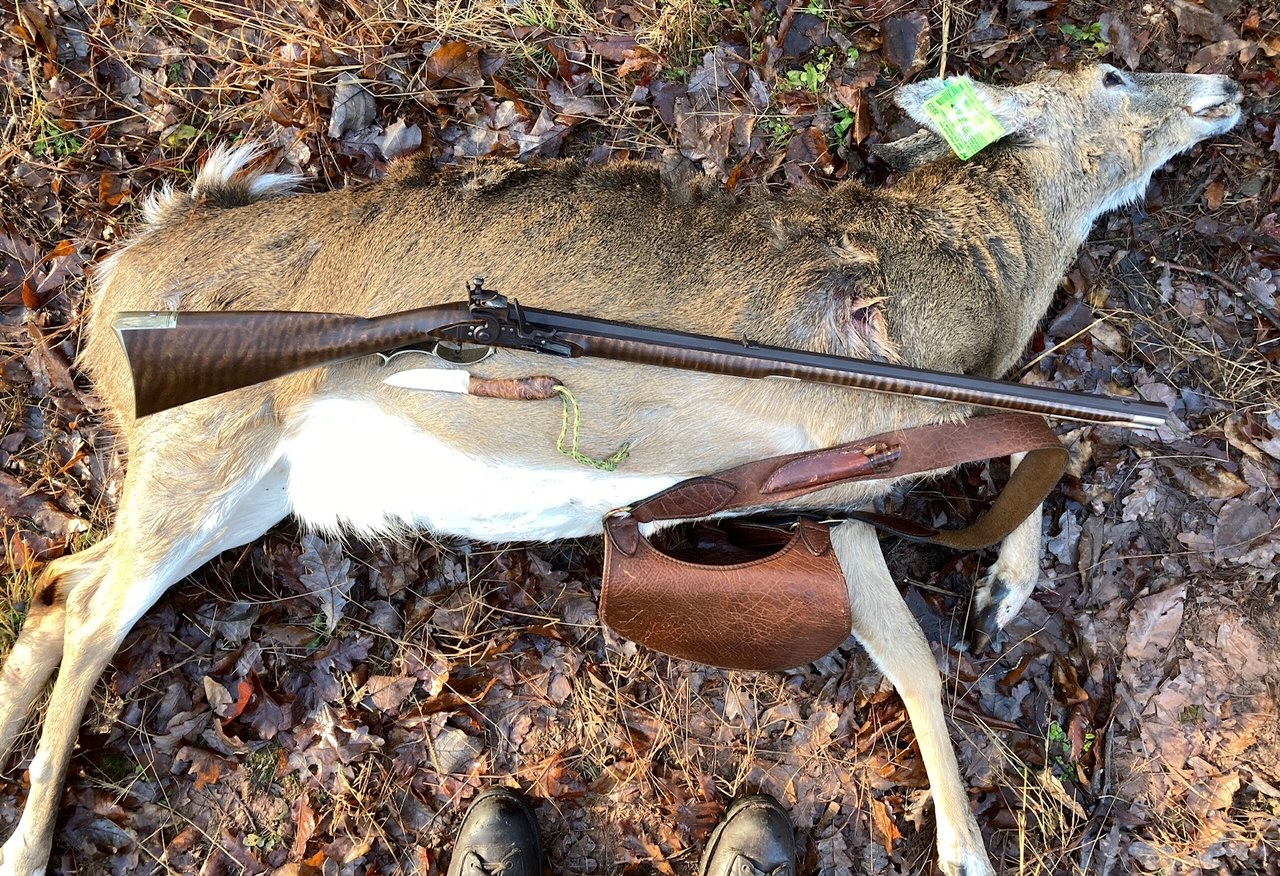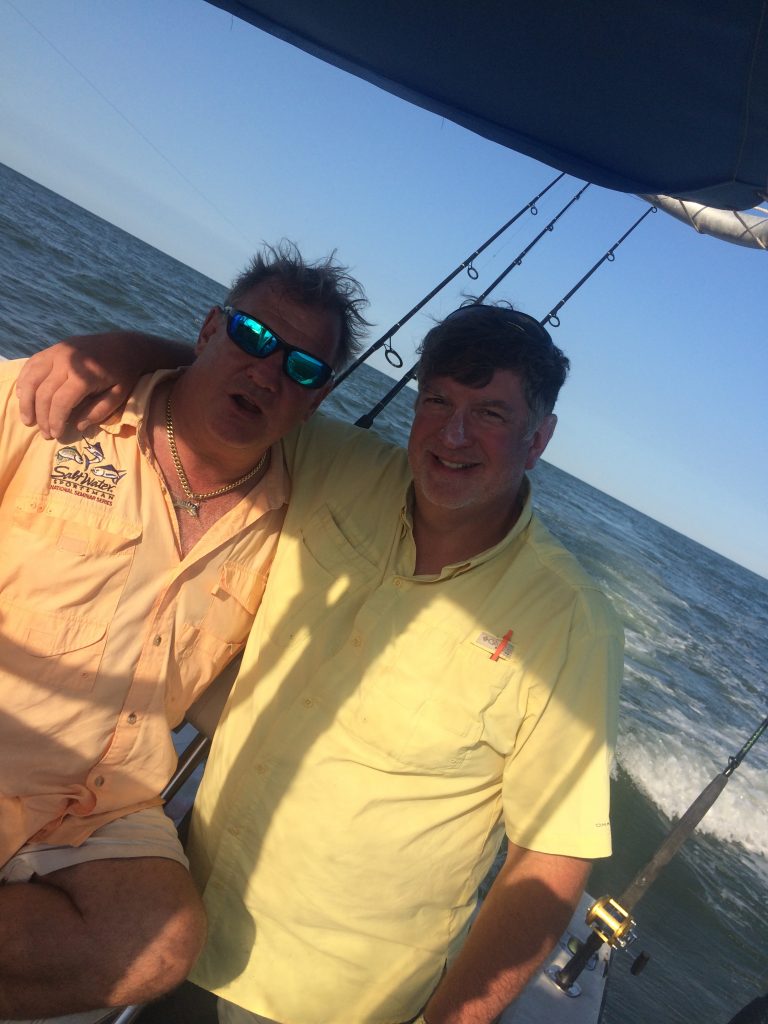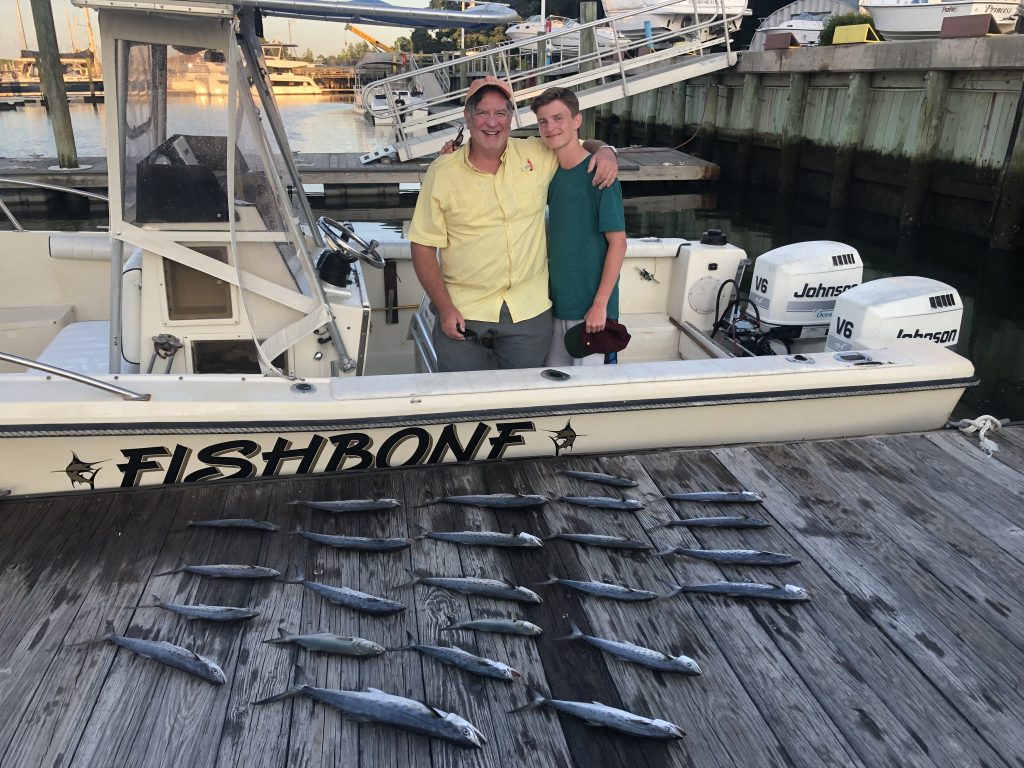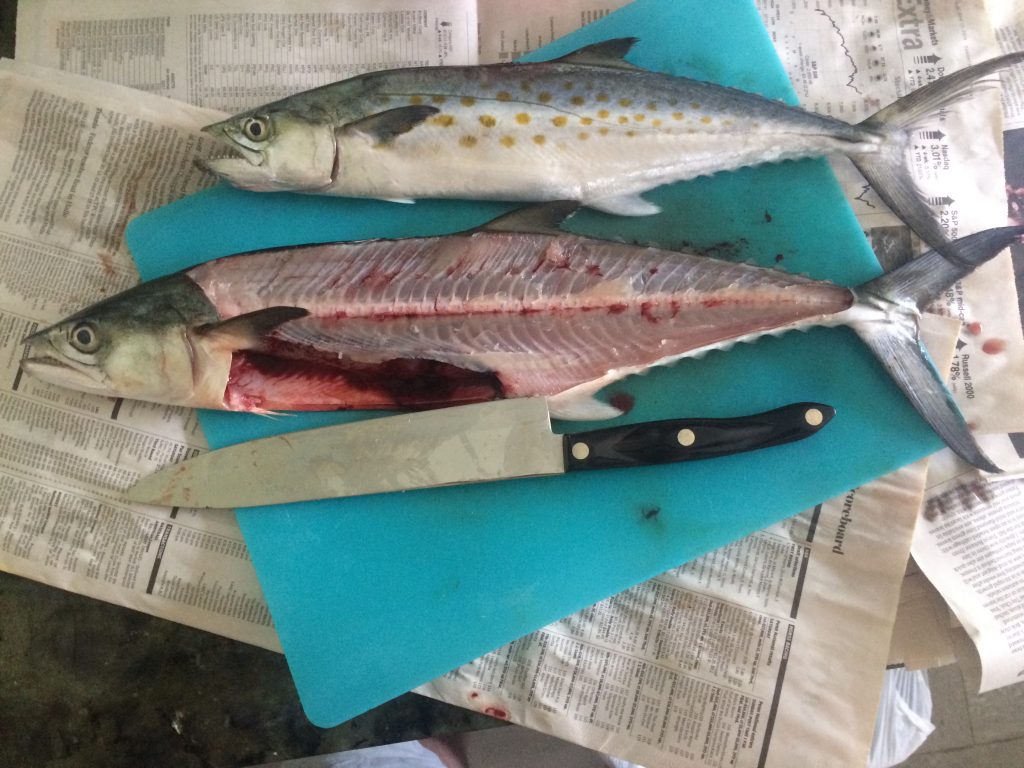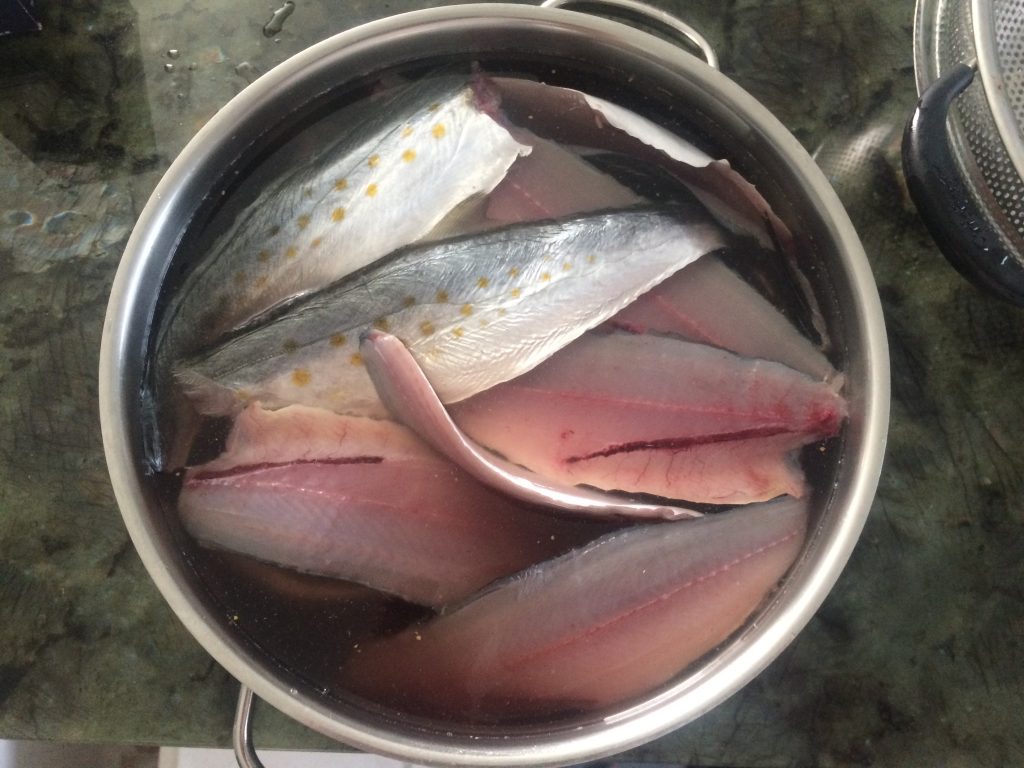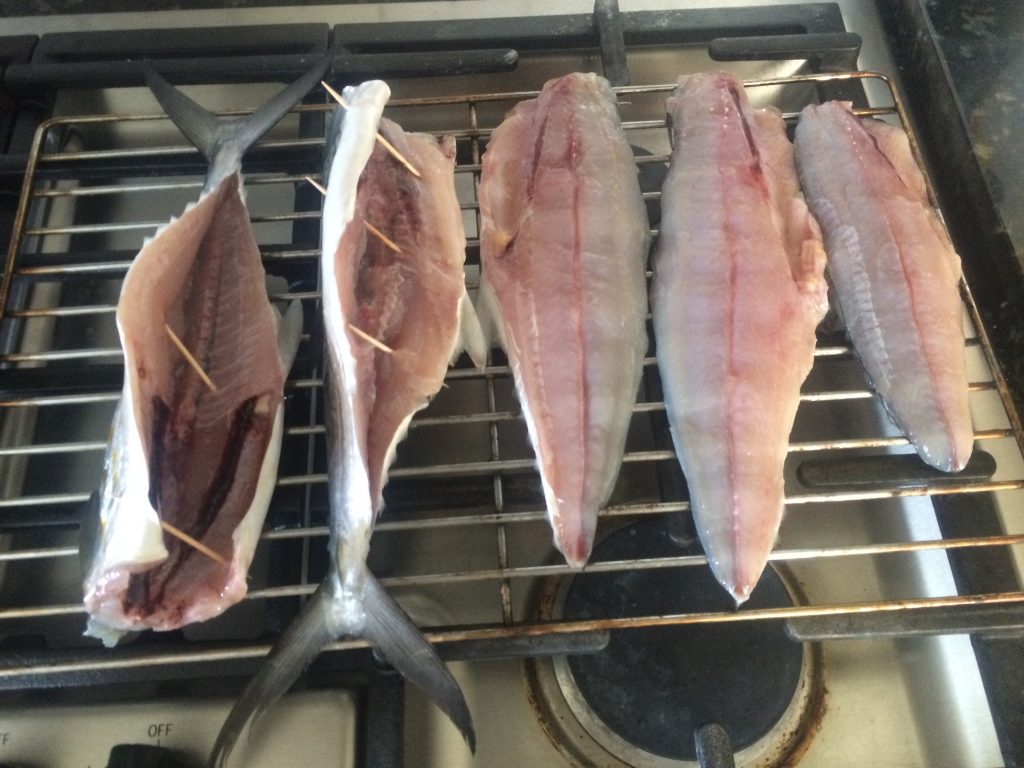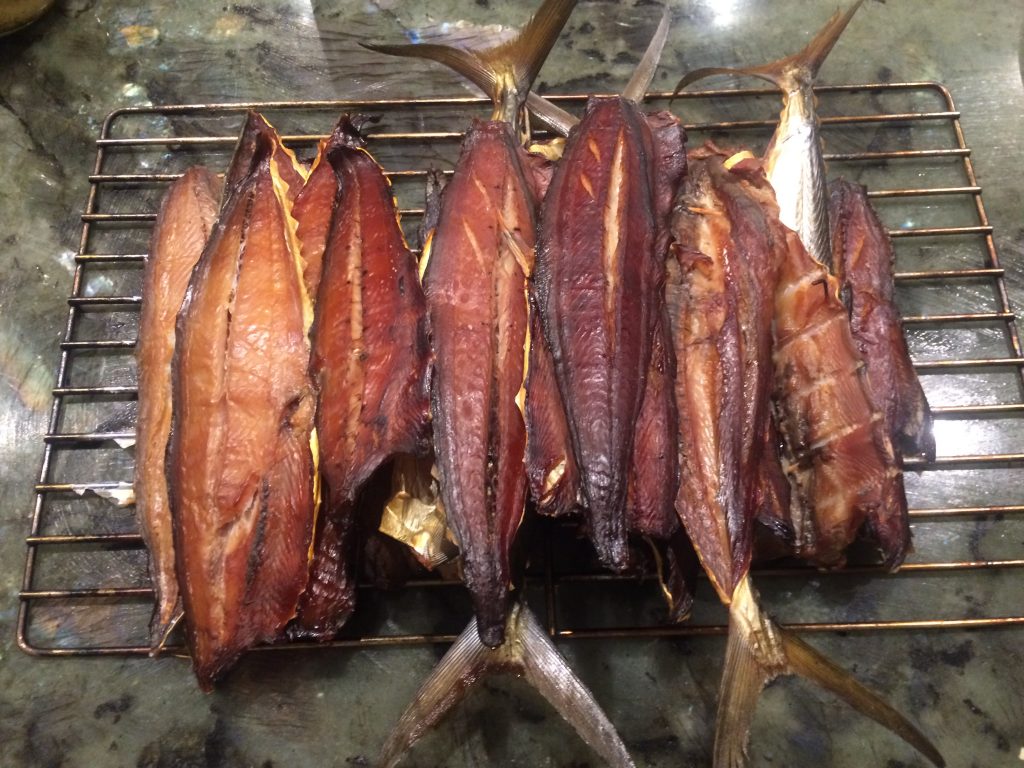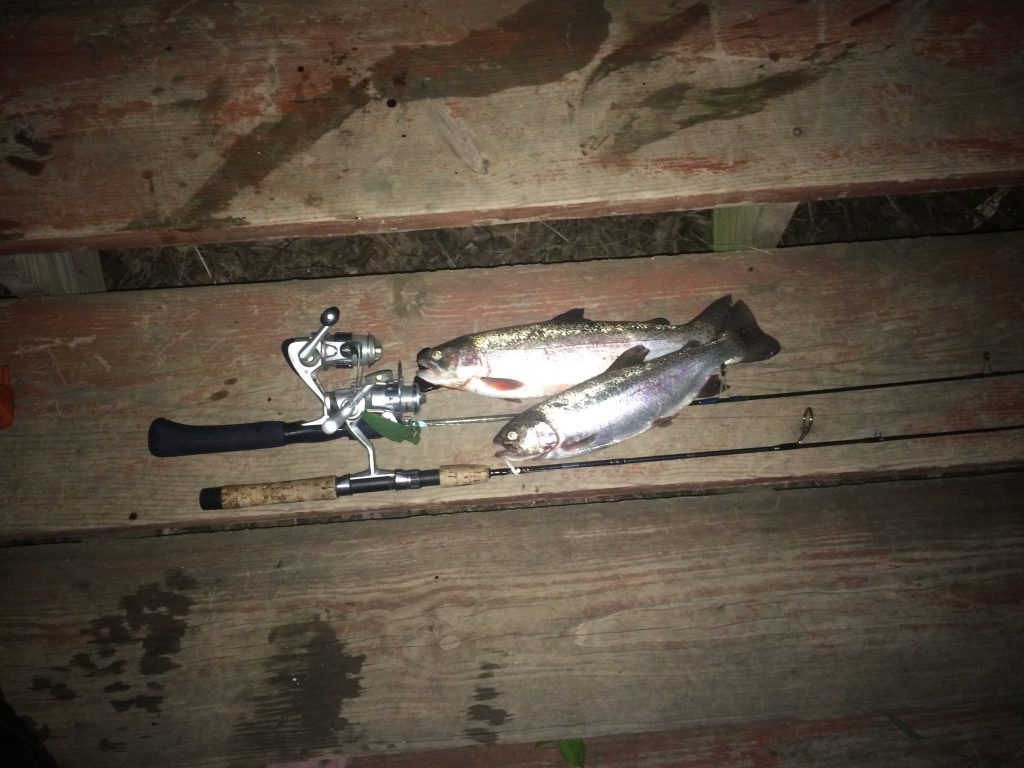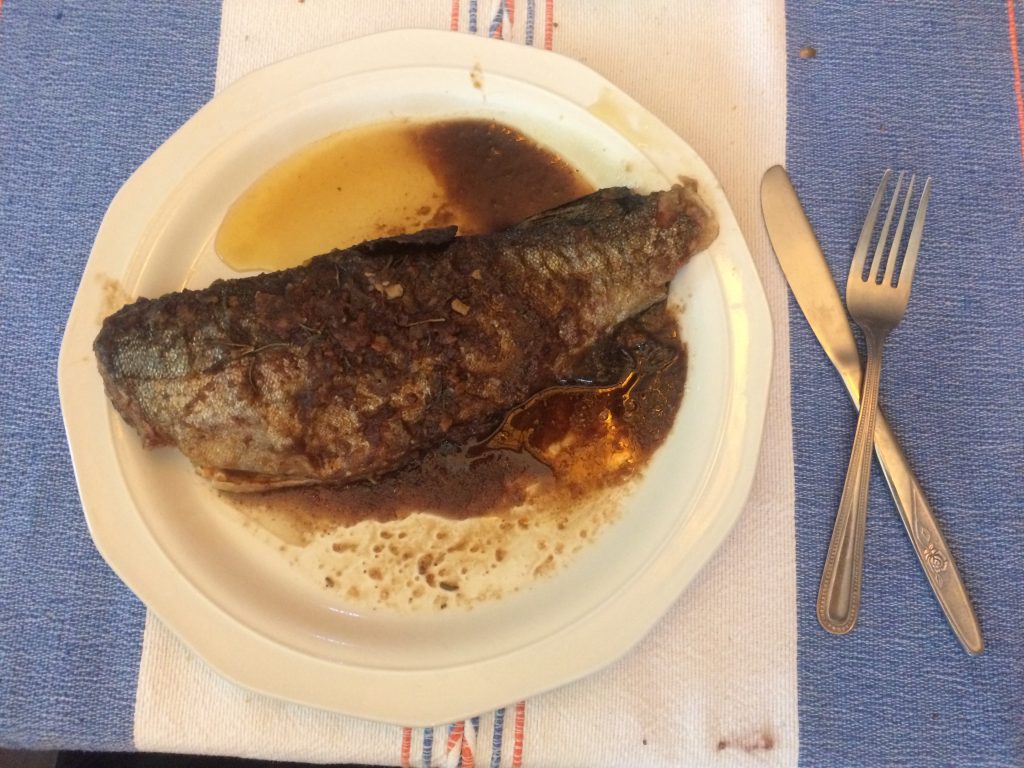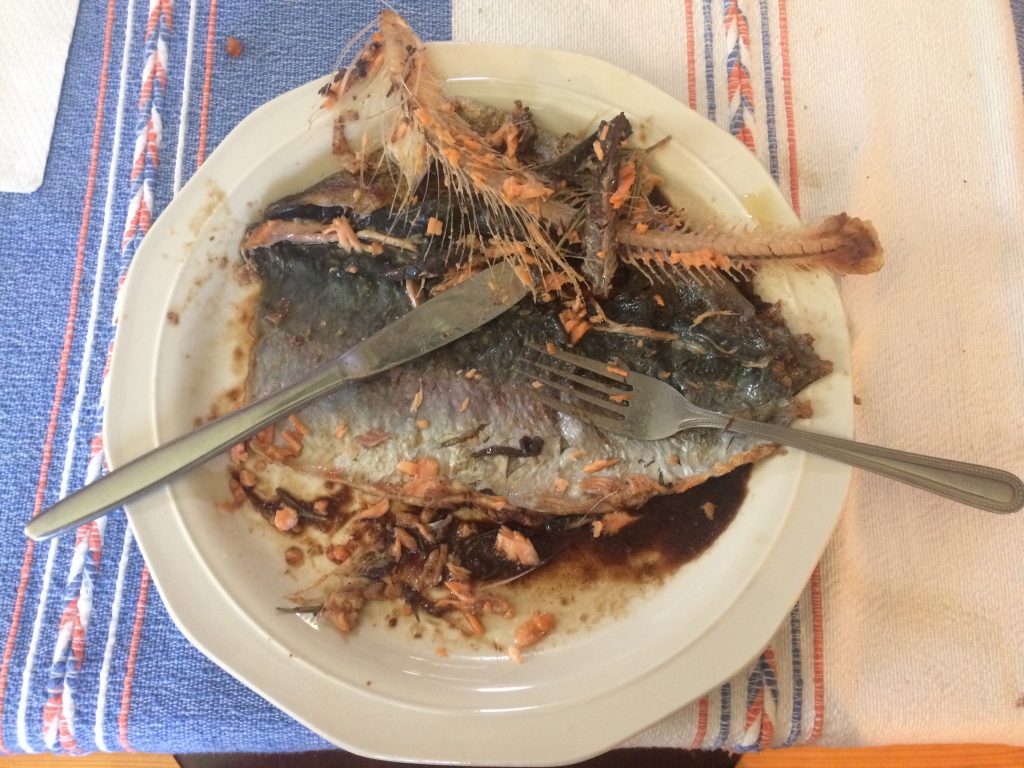Posts Tagged → flintlock
Two great shows coming up soon!
Two great shows are coming up soon. If you live in central Pennsylvania, then fortunate you. If you live farther out or even far away, even out of state, both are worth traveling to, even from far, far away.
The first show starts this Friday, the 18th Century Artisan’s Faire, now (as of last year) held in Carlisle, PA, at the Carlisle Expo Center at 100 K Street. It used to be called the Lewisburg Show, because for decades it was held in Lewisburg, PA, along Route 15. The Carlisle Expo Center is SO MUCH BETTER than the prior hotel venue. I went to this show last year and could have easily spent both days there. Better lay-out, better room, more room, higher ceilings and far better lighting.
If you are afflicted with history-itis, with a passion for hand-made tools and utensils of all sorts, including eating utensils like forks and knives and plates, with blacksmithing and historic reenacting, with hand-carved curly maple furniture and gunstocks, leatherworking, with anything black powder or flintlock or percussion, with 17th and 18th century clothing, then this show is for you. I have been attending for I don’t know how many years, a long time, and every time I go it’s worth it. The nationwide talent that is assembled at this show is amazing to experience.
The second show starts this Saturday, the Great American Outdoor Show. It is held for the whole week in Harrisburg at the Farm Show Complex on Cameron Street. This is the “new” show built on the ashes of the old one, which I helped end by starting a boycott.
The prior show was run by a British promoter, and they had no feel for America, Americans, guns, gun rights etc. In the immediate political backwash of another Democrat-run mass school shooting, that British promoter tried to prohibit exhibitors from having AR-15 platform rifles. That set off a slight negative reaction among the paid participants, advertisers, and attendees that culminated in the boycott, which ended the show that year. And it ended that tone deaf promoter’s role in the show ever-after.
In the press interviews I did about shutting down that show, my favorite quote was “The British did not understand Americans in 1776, and they still don’t understand us in 2012.”
To which I think we can easily now add the entire Democrat Party, because it is openly and officially the political party of big government, of citizen disarmament and gun confiscation, of digital currency and your money control, of high taxes, of speech control, of thought control, of censorship, of car control, of health care control, of Covid lockdowns and private citizen movement control, but not USA border control.
Nope, under the Democrat Party the American border is wide freakin’ open to tens of millions of anyone and everyone from around the world.
So, go to these two shows. Both are very family friendly, regardless of what your family members each like. You will be really happy you did go. Enjoy America and freedom while you still can.
On Friday and Saturday you can rub elbows with gunpowder horn makers, flint knappers, flintlock and percussion rifle makers, black powder bag makers, historic dress and bonnet makers, tri-corner hat makers, and blacksmiths.
On Sunday you can go to the Farm Show Complex and see the whole world of tactical socks and vests, endless semiauto blast-em rifles as well as very cool historic lever action rifles and Wild West revolvers, bushcraft duck calls, high fence deer hunting legends and other TV created one-dimensional personalities, useful ATVs, fabulous boats, and cool end-of-the-world survival RVs, high tech synthetic and high tech wool outdoor boots and clothing, hunting guides from all around the world, and all kinds of fishing stuff. The Great American Outdoor Show really is an amazing experience. I highly recommend it.
I myself will be both a visitor and a volunteer at the GAOS. After many years of volunteering at the show and its predecessor, I took 2021-2023 off. This year I will be volunteering one or two days with the Pennsylvania Trappers Association, a wonderful conservation group of which I am a Life Member. Come on by the PTA booth and chat with us!
Welp…there is always the late deer season
The 2023 deer hunting season is probably going to be remembered in most parts of Pennsylvania as a strange time. For reasons already written about here previously, the deer just have not been available to the hunters in ways and numbers that hunters are accustomed to. On properties I hunt all over Central PA, deer were either invisible or invested with magical disappearing powers. Everywhere I am familiar with, the deer moved up hill, as far away from human activity as possible.
To say many hunters are frustrated is a big understatement.
All I can say to all this bad luck is that at least we have the upcoming late flintlock and archery seasons to try to make up for the low productivity of our regular season. And in at least one area designed to reduce Chronic Wasting Disease, DMAP 6396, we have a continuation of rifle season for antlerless deer only until late January. I intend to take a new rifle afield for that season in that area.
Folks, for the next ten days, practice, practice, practice with your flintlocks. My biggest challenge with flintlock hunting is the huge flash going off in my eyes. Once I get used to that, I am deadly steady with the old smoke pole. Probably takes me ten to twenty flashes to begin staying stone cold steady.
Late last year after a bunch of really lame close-range misses, I began practicing shooting my flintlock rifle with only priming powder in the pan, and nothing loaded in the barrel. Repeated trigger pulls with explosive flashes in my face helped me overcome my natural reaction of flinching and pulling my head back and away from the flame. Needs no explanation that moving your head off the gunstock is going to ruin your accuracy and aim, which means you probably won’t hit what you thought your gun was aimed at.
Ah yes, the well-earned moniker “flinchlock…”
Couple of recommendations: Go high up, because that is where most of the deer are, and try to hunt in groups, either as actual drives or as organized approaches to hunting the same area together.
Remember to go afield with a brand new sharp flint on your gun. If you take the old, dull flint that you have been practicing with this year, you stand a good chance of hearing “klunk” when you pull the trigger as the rounded flint then hits the frizzen without any sparks, and thus yields no primer ignition, and thus there is no ka-boom coming out the end of your gun barrel.
Though quite often the deer will be fascinated by the weird klunk sound, staying riveted in their spot staring intently in the direction of that odd sound. You might get a second or even a third trigger pull during this stare-down period.
Good luck, folks! Shoot straight and walk tall.
If you are going to hunt flintlock, you must practice, practice, practice
Flintlock hunting season ended in southeastern Pennsylvania two weeks ago, and for those hunters who had either not yet harvested a deer or, who, in the alternative, are usually highly successful, it was a last ditch chance to fill a doe tag or the unused buck tag. I know full well from my own feeling, as well as from hearing from other hunters similar to me, that despite having a good season (I killed four deer in two counties. One with a percussion rifle in October, two in rifle season with an open sight 308 Ruger RSI, and one with a flintlock in January), that sense of lost opportunity hangs pretty heavy. Perversely, the more successful a hunter is, the more successful he feels he must be with all remaining tags and opportunities.
In the old days (of my youth and long before then) that lost opportunity was called the “horse collar,” and however we might describe this nagging feeling, it can be a pretty tough driver. Guys (definitely guys only; women are too smart or doing too much real, important work to act this way) will just throw themselves into the late flintlock season hard. That unused tag weighs heavier and heavier as the season winds down, the deer get so much more skittish, and we feel the last opportunities to prove ourselves slipping through our cold gloved fingers.
On top of the usual limitations listed above, I unnecessarily handicapped myself badly before flintlock season started: I failed to practice shooting with my flintlock ahead of time. If there is one hard fact chiseled in granite about flintlocks that everyone knows, it is that they require regular practice in order to shoot them half decently. Especially before hunting big game with one. Not just because they require lots of little pieces of metal and a rock to all quickly and seamlessly work together to make the barrel go BOOM, but because a big flash of flame and smoke goes off right in the shooter’s face.
And that big flash in the powder pan in your face makes those people who have not practiced and become used to the flash flinch badly. It is natural to flinch your face away from a fiery explosion. And when you flinch, you are sure as shootin’ gonna miss. Hence the moniker “flinchlock.”
And flinch-miss I did this past late December and early January. A lot. Missed a deer in Lycoming County, missed a whole bunch of times in Dauphin County, including a dandy buck. In fact there was one doe I missed three times on three days in one week with two different flintlock rifles, all from close range. All because I had not practiced before the season.
When I finally did take a deer in the late season, it was because I had patterned him, a huge buck, all year, and I had just encountered his tracks and knew where he was likely to come in to investigate the smell of a late season doe in heat. And in fact he did show up, right where he should have come. At first he was just a faint shadow within many shadows in the big forest’s early morning half light.
I wasn’t even sure he was a deer when he first showed up. He just appeared, then stood behind trees, then behind a bush, looking around intently, never offering a good shot on his vitals. When he finally stepped into a shooting lane, I knew it was him only because of his enormous body and the improved daylight that let me take in the steer-like curves of his shoulders and hindquarters.
His huge 150 inch class antlers had prematurely dropped (which this year seemed to be the rule across northern and even parts of southern Pennsylvania), and then he, too, dropped. The round ball hit him square on the ribs and took out his lungs and the very top of his heart. After a late season of many misses, it is OK to admit that I only hit him because I had the rifle on a solid rest and I was seated. And that by that time I was not surprised when the flash went off with the BOOM of the rifle, but rather I was cool as hell and stayed looking straight down the barrel with good hold-through, watching him kick a few times through the smoke cloud that enveloped us both.
I do not name bucks, because it does not appeal to me to do so. But I still knew who this buck was from having encountered him several times over the past eight years. Several years ago I saw him twice in bear season, and his rack was good. In 2021 he came in to investigate some doe pee on a remote hillside, alongside a smaller deer with an unbelievably symmetrical ten point rack. I took the perfect rack and watched the bigger one run off. By January 2023 he had not an ounce of fat on his entire brute body whose hide will square twelve feet. He also had a huge rotting hole in one hoof (his hooves were each the size of my hand), and no teeth left on his jaw. This sagacious deer, whatever his name was, had attained the rarity of great grandfather status in the woods, and regardless of how cagey he was, his days were numbered. One way or another, he was destined to die soon.
Despite looking several times in the right places for his shed antlers, they did not show themselves. Possibly because a utility line right-of-way clearing crew had come through ahead of me. But who cares about finding his big antlers, right? His immense estimated ninety pounds of meat is right now feeding two families, and I shook off the horse collar from all the prior missing I had done.
Learn from my mistake: Practice, practice, practice with your flintlock before the season. And then the day before season opens, snap a couple of pans of priming powder on an empty barrel while aiming at a picture on the wall. Just to keep from flinching and missing.
And one more thing: Flintlock hunting attracts me intensely because it requires all of the skills a real hunter must have to be successful. Open sights, hold through, stealth and good wood craft, patience, etc. This is real hunting. There are no unethical lazy long range assassinations of unsuspecting wild game with a flintlock.
Oh, and one more thing: Apparently the Super Bowl starts soon. Super Bowl? Never heard of it. The NFL lost me a long time ago, in 2016 to be exact, with all of the anti America kneeling crap. And apparently tonight there is supposed to be yet another woke racial song sung at halftime. My time is worth much more to me than to spend it on and with such useless people as this. Instead of watching this game played by spoiled brats, I will be building a new work table.
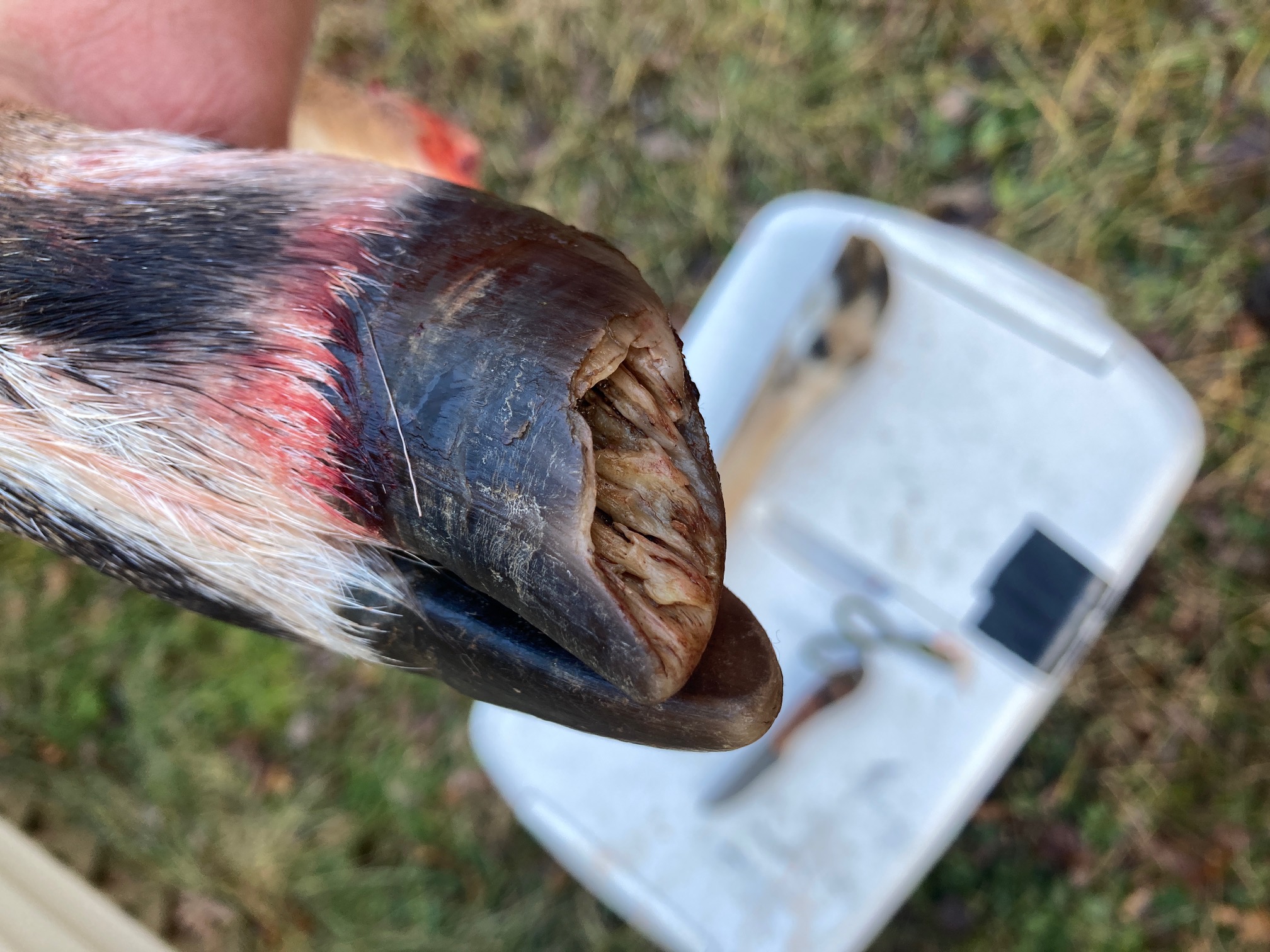
Huge old deer had weirdly rounded hooves and this big rotting hole in one hoof. His entire leg above this was enlarged, probably infected. All of his teeth were gone, completely worn down. His belly was full of grass, because he was unable to browse brush any longer.
Recent gun “buy backs” hugest waste of money and time
Leave it to people who are so consumed with hate that they can’t think straight to make a solid public policy, and so they expend public time and funds on really stupid things.
We are talking here about the hate that so many elected officials (99.5% of whom are registered Democrat Party) have for firearms. Firearms that otherwise secure our police forces, secure our armed forces, secure food for the table, and secure our private homes and personal bodies from violence. Firearms by themselves never did anything to anybody, but if you are an ineffective elected fool, and you are looking to make some kind of statement about how effective you are to people who are easily impressed, you do a “gun buy back.”
Such foolishness recently happened here in Northampton County, Pennsylvania and in Utica, New York.
Never mind that there is no “back” in the gun buy-back, because the guns being purchased never belonged to the official buyer. But hey, fools are gonna fool, especially with foolish sounding policy names, and so we get these mis-named public gun purchases in mostly Democrat-run towns and counties. *I grew up in a rural area where the Democrat Party was heavily represented. Today, not one person out there is a registered Democrat, because this political party has gone off the rails.
Public funds are expended to buy guns, with great fanfare and yet very little or no gain in public safety. Usually the public message goes something like this: “If our purchase of guns here today stops just one mistaken shooting, just one crime, just one accident, why then this is all worth it.”
Which is of course more foolish nonsense. The same communities are often wracked with violence and epidemic official failure, causing hundreds of local citizens to die unnecessarily and prematurely every year. But the “just one life” thing always sounds so serious.
Never does anyone ask What if these guns were used instead to defend our borders by state militia in Arizona, or New Mexico, or California, or Texas? Think about how many lives THAT would save, given how many drug and drug violence deaths are being walked across America’s open southern border right now. These guns in the hands of private citizens defending the American border could probably save hundreds of thousands of lives!
Or, what if the local police put on a gun safety program and taught these same private gun owners with little firearms experience how to safely shoot and store their guns? They would probably make their homes so much more safe and crime-resistant!
When all of the potentially saved lives are compared to the one or two potentially, theoretically, possibly saved by the “gun buy-back,” then we see these gun buy-backs a) don’t save lives and b) are a waste of public money.
What really strikes the eye in these publicized public firearm purchases are the purchased firearms’ low quality, the large number of antique black powder guns that have not hurt anyone since the 1860s, the valuable historic and collectible guns that should be sold to raise money for public agencies, and the simple hunting-grade weapons that leftists tell us they never ever want to take away from us. And all of the hunting ammunition! Destroying this stuff is the crime!
Why don’t the police use the ammunition for police officer training? Why destroy something so valuable as ammunition?!
And since when does the government rip off private citizens, paying them literally pennies on the dollar for high value guns, and then instead of monetizing that public money investment, the government employees then destroy the high value property?
Why doesn’t the government have an appraiser on site who can advise private citizens about the actual high value of the old gun the local government is offering them $75.00 for? Why is ripping off local people a good policy?
In Utica, New York, roughly $30,000.00 of public money was spent on purchasing… “ghost guns,” which is a political term, a loaded term, and a fake term to describe guns that are manufactured off the grid. And you know what? Those “ghost guns” that sound so dangerous and scary to the New York Attorney General… they were printed on a 3-D printer! In other words, they probably cost a few bucks each to make, and then the public mis-paid the owners hundreds of dollars each.
How does any of this make sense?
And yet all of these guns and the ammo are destined to be destroyed. So say the unquestioning mainstream media fools, who stand up in front of the cameras and parrot the talking points they are handed. Hint to the paid media people: You got a degree in “journalism,” I think because you were supposed to be…journalists? What kind of a journalist doesn’t ask questions, especially of those in positions of political and official power? (Answer is: Mainstream media people are not journalists and they do not ask questions. Instead they parrot narratives given to them by leftist government employees).
So we here are doing the job of the “journalists” who appeared in writing and on TV with the articles and reports about the gun purchases in Northampton County, PA, and Utica, NY. We are asking the simple questions, and making the simple points that these are not intelligent uses of official time or money. But then again, we do not begin at the assumption that destroying any and all firearms is the right and intelligent thing for government to do, because we are not filled up with mindless hate for inanimate objects.
[Question to the pro 2A activists in Northampton County: Why not sue this nincompoop of a DA, Terry Houck, and demand that he at least assess the market value of these guns before having them destroyed? In no other area of government do people get rewarded for destroying valuable public property]
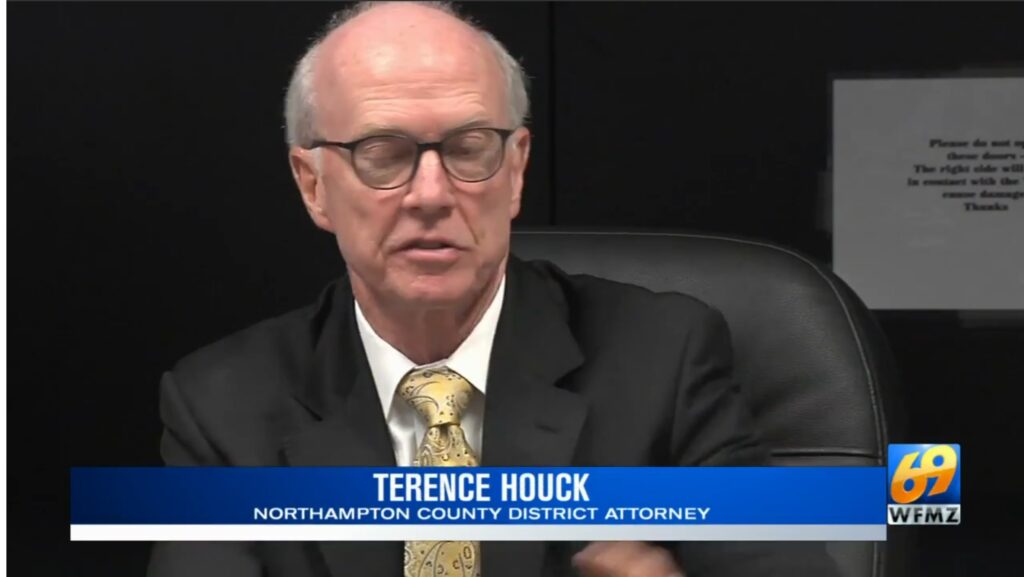
Terry Houck is Northampton County’s idiot DA, who takes great pride in knowing zero about the collectible, valuable guns he is destroying
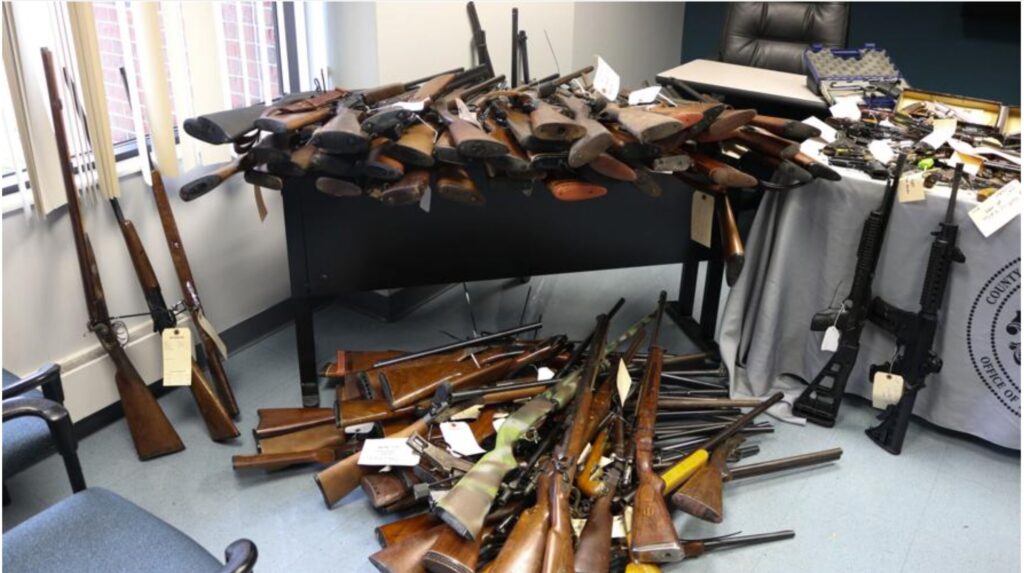
Flintlocks, black powder percussion guns, hunting shotguns, single shots, highly collectible and valuable Veteran bring-back guns from Europe, all said by DA Terry Houck to be dangerous. And yet…none of these are associated with crime. And therefore they are not dangerous.
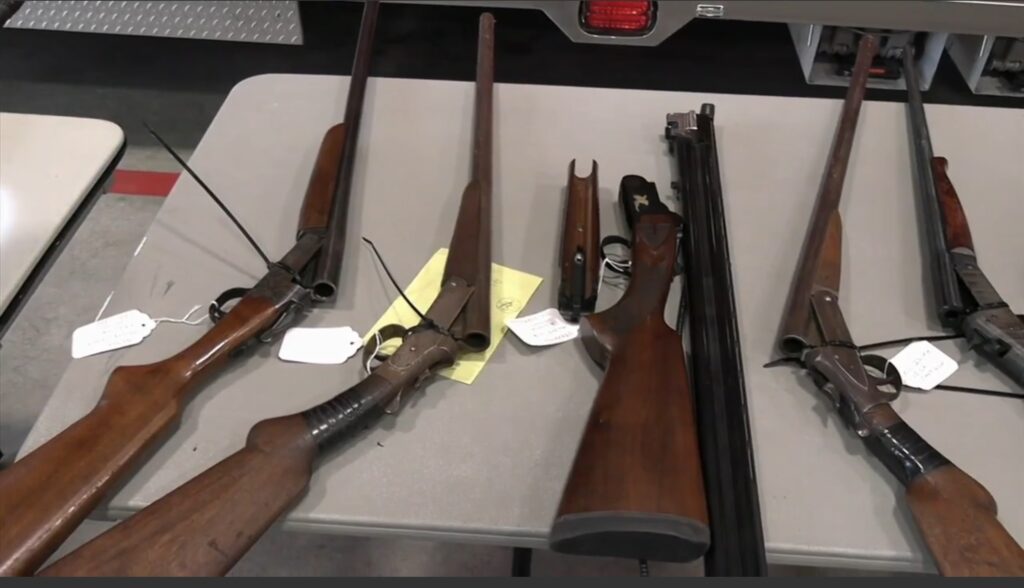
These are not the kinds of guns used in crime. Simple single shot shotguns and one really valuable over-under hunting shotgun, all destined to be destroyed. For no public benefit at all. Just to make fools feel good about themselves
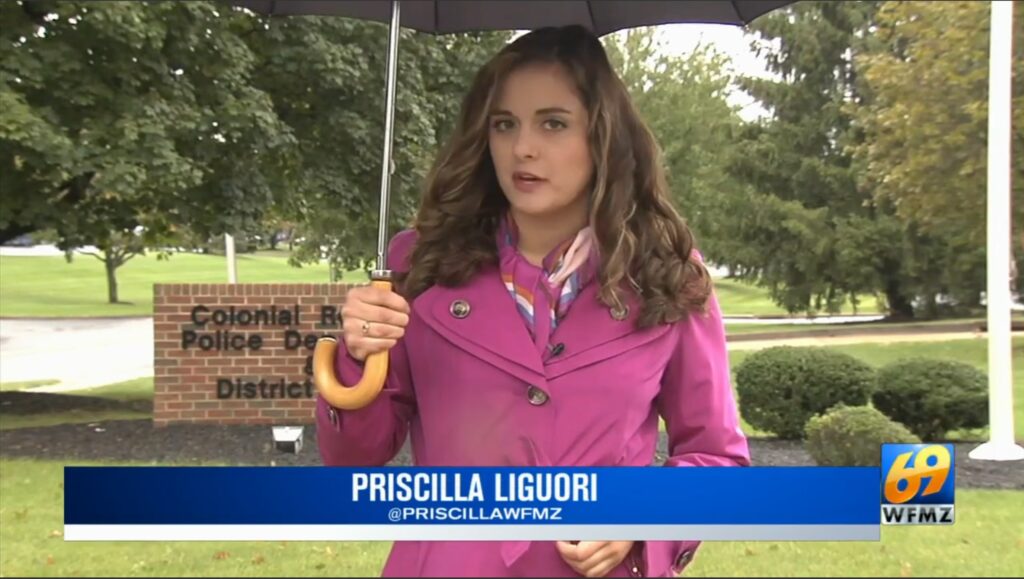
If you stand in front of a camera and talk like a parrot, are you a journalist? Priscilla Liguori asked no questions, committed no acts of journalism in the making of her report about Northampton County’s gun purchases. One more big mainstream media failure
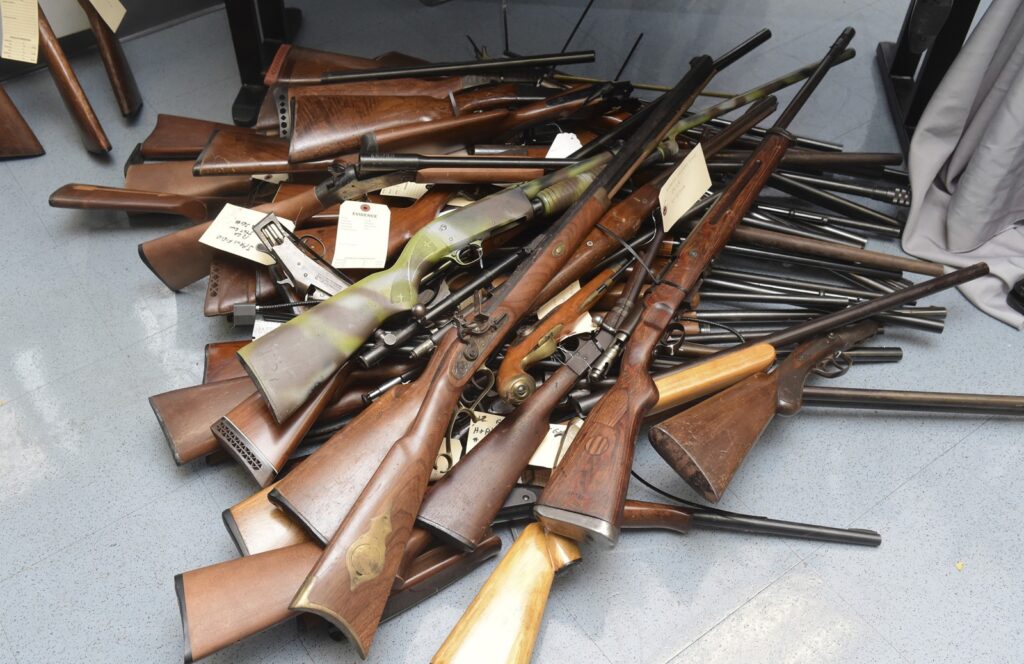
The green-colored gun is a Remington 20-gauge pump shotgun used for hunting birds and rabbits. The rifle at the far right bottom with the rounded pistol grip is a high value Veteran bring-back gun from Europe that never hurt anyone. The gun at the very top of the heap is a single shot black powder FLINTLOCK muzzleloader used to hunt deer; with 1790s technology, it has zero potential use in crime. Only hatred-filled firearm prohibitionists cheer on the destruction of these useful and safe recreational and collectible guns.
Primitive hunting techniques are more important than ever
In this day and age of popular stainless steel and plastic hunting rifles and Hubble telescope-sized rifle scopes, primitive hunting techniques and weapons are more important than ever. Something in the bad age of video games and instant gratification happened to the American character in the past thirty years or so, and so many young Americans have become lazy and even a bit heartless, as a result. Hunting culture has suffered from this, too. Really badly. Today’s focus seems to be predominantly on the kill, and much less on the process of the hunt.
Those curious about the distinction here should look up some neat videos from real hunters in the big woods of Vermont, Pennsylvania, and the Adirondacks.
Hunting should never be just about, or mostly about, killing an animal. Especially if the hunter wants to call it a trophy and put it up on his or her wall as a representation of his skill.
People trying to justify 300, 400 yard long range shots (or farther) on unsuspecting animals are not hunting, they are assassinating. Their wood craft often sucks, their field craft is limited to wearing camouflage, and their knowledge of the game animal is negligible. They are not really hunters, but rather shooters. Their high-tech guns, ammo, and rifle scopes are a crutch diminishing their need for good woodcraft, and it also results in a lack of appreciation for an actual hunt, and a lower value placed on the animal.
Culling oversized wild animal populations for the benefit of the environment is one thing, but hunting wild animals for pleasure and clean meat should be accomplished with skill. Age-old skills that everyone can respect. Hard-won wild animals taken with real skill under fair chase conditions are all trophies.
An unsuspecting big game animal assassinated at long range (or worse, inside a high fence, or over bait) requires very little hunting skill, and can never be said to be a trophy that is reflective of the hunter’s skill set. And yet isn’t this why so many hunters want big antlers and broad hides? They see these big animals as a reflection of their hunting prowess, of their manhood, their chest-thumping status within the outdoors community. As a result, America has developed a hunting culture driven by bigger-is-better trophies, at any cost, all too often achieved through long-range assassinations of unsuspecting wildlife, or over bait. Fair chase, which has always been at the heart of hunting, has been tossed away in favor of quick gratification and unfounded ego bragging rights.
The primary reason why primitive hunting weapons are so important today, is that someone has to keep the culture of hunting alive. What is a primitive hunting weapon? Pretty much any legal implement that requires the hunter to work hard to develop unique field craft/ wood craft skills, including the ability to penetrate within a fairly close range of the prey animal’s eyes, ears, and nose: Any bow (compound bow, stick bow, self bow, longbow, or other hand-held vertically limbed bow), spear, atl-atl, open-sighted black powder or centerfire rifle, any large bore handgun with or without a scope, should qualify. Flintlocks, percussion cap black powder muzzleloaders, and traditional bows are especially challenging to master and to harvest wild game with.
All of these primitive weapons require the hunter to actually hunt, to rely upon his woodcraft to carry him quietly and unseen across the landscape, and into a fair and close range of his prey animal. Animals taken with primitive weapons and techniques are earned in every way, and therefore they are fully appreciated.
Few experiences bother me more than watching some internet video of a fourteen year-old hunter running his hands over the antlers of a recently deceased buck, and listening to this inexperienced mere child discuss the finer aspects of this rack, its inches, its points, its relative size, and its (barf on my feet) trail camera name. Usually the child has shot the deer from an elevated box blind that conceals all of the hunter’s scent, sound, and movement. Whoever has taught these kids to hunt this way exclusively, and to then look at deer harvested this way as so many bragging rights, has done a huge disservice to these kids. These kids are going to grow up into poachers and baiters, always trying to prove how great of a “hunter” they are, and how studly and manly they are, at any cost. They will end up doing anything to score the next “record book” animal. These young kids who are being warped right now with this trophy nonsense are the future of America’s hunting culture, and what a crappy culture it will be if it is dominated by big egos and even bigger mouths armed with sniper rifles and no actual hunting skill.
Moms, dads, grandpas and uncles who are beginning to teach kids to hunt right now can do two simple things that will ensure their little student grows up into an ethical, responsible, high quality, law-abiding hunter: Make them use open sights on single-shot firearms and bows.
The skills that young hunters develop from having to rely on open sights and single shots (primitive weapons) will force them to achieve a high level of field craft, wood craft, and fair chase values. Developing skill requires a person to overcome challenges and adversity, often making mistakes along the way. And that results in better character.
Forcing kids to get close to their prey animal, and to take only carefully aimed shots with just open sights, will result in people who become really excellent hunters. Adults can always opt to add a scope to their rifle as their eyes age, but the lessons learned early on in concealment, controlling movement, playing wind direction, and instinctive shooting will keep the respectable art of hunting alive and well.
This Fall, get your little one started on a flintlock or old Fred Bear recurve bow from the get-go, for squirrels and deer, and watch as a true hunter is born.
PA’s must-do 21st century deer management policy
When Gern texted me on November 12th “planning to plant the entire farm with grass next Fall… 100% hay… can’t afford to feed wildlife. Going broke trying to make money,” I knew that my best deer management efforts had finally failed over the past 13 years.
Every year I work hard to make sure our deer season is as productive as possible. Because our tenant farmer pays us a per-acre rent every year, which covers the real estate taxes and some building maintenance, and for 13 years he has grown soybeans, corn and hay in various rotations across the many fields we have. Our arrangement has generally worked out well both ways, but that text message ended my sense of satisfaction.
While I do wear dirty bib overalls when I run the sawmill and also when I try to impress people who don’t know me, Gern is the actual farmer who tills (broad sense), fertilizes, plants, and harvests a very large farm property in Dauphin County, some of which I own and all of which I manage. Our property is one of many that comprise about 30,000 acres of farm land that Gern and his family cultivate in Central Pennsylvania. To say that his family works hard is the understatement of all understatements. Gern embodies AMERICA! in flesh and spirit, and to see him so utterly beaten down by mere deer is heartbreaking.
Over the years I knew that both overabundant deer and bears were taking a significant toll on our grain crops (Gern’s primary source of family income), and so I worked hard to recruit the kinds of good hunters who would help us annually whittle down the herds, so that the pressure was taken off of our crops. About five years ago I proudly photographed one of our late-summer soybean fields, at about four super healthy feet high, indicating a minimal amount of deer damage. When I passed the soybean field pictures around to other farmers and land managers, nothing but high praise returned. And so I patted myself on the back for our successful deer management, and congratulated our guest hunters, who were killing about 25-35 deer a year on our property. Our hunters were filling an impressive 50% to 65% of the roughly 54 DMAP deer management tags we hand out every year, as well as some of their buck tags and WMU 4C tags.
But, change is life’s biggest constant, and while I rested on my hunting laurels, deer hunting changed under my feet. The past few years have seen a lot of change in the hunting world. First and biggest change is that hunters in Pennsylvania and other states are aging out en masse, with fewer replacements following them. This means that a lot less pressure is being brought to bear on the deer herd. Which means a lot more deer are everywhere, which is not difficult to see if you drive anywhere in Pennsylvania in a vehicle. There are literally tons of dead deer along the side of every road and highway, everywhere in Pennsylvania. We should be measuring this at tons-of-deer-per-mile, not just the number of dead deer and damaged vehicles. Frankly this overabundant deer herd situation is out of control not just for the farmers who feed Americans, but for the people who want to safely drive their vehicles to the grocery store. Hunters are sorely needed to get this dangerous situation under control, and yet Pennsylvania’s deer management policies favor overabundant deer herds to keep older hunters less crabby.
So, because I am about to break out the spotlights and AK47 to finally manage our farm deer the way they need to be managed (and yes, PA farmers are allowed to wholesale slaughter deer in the crops) (and yes, I feel the same way about our favorite forested places in the Northern Tier), here below is the kind of deer management/ hunting policy Pennsylvania needs via the PGC, if we are going to get the out-of-control deer herd genie back into its bottle and stop hemorrhaging farmland on the altar of too many deer:
- Archery season is too long. At seven weeks long, the current archery season lets a lot of head-hunters stink up the woods, cull the very best trophy bucks, and pressure the deer enough to make them extra skittish and nocturnal before rifle season begins. Even though rifle season is our greatest deer management tool. The same can be said of bear season, which is the week before rifle season. So shorten archery season and lengthen rifle season, or make the opening week of deer season concurrent with bear season, like New York does.
- Rifle season must be longer, and why not a longer flintlock season, too? Is there something “extra special” about deer come the middle of January, that they are prematurely off limits to hunting? Most bucks begin to drop their antlers in early February. Have three weeks of rifle season and then five weeks of flintlock season until January 30th, every year. Or consider flintlock hunting year ’round, or a spring doe season in May.
- More doe tags are needed. There are too few doe tags to begin with, and most doe tags sell out and are never used. This is especially true in WMUs 5C and 5D, where despite enormous tag allocations, tags quickly become unavailable. That is because individual hunters can presently buy unlimited numbers of doe tags, for some reason having to do with the way deer were managed in the 1980s…c’mon, PGC, limit of two or three doe tags for each hunter in these high-density WMUs, and at least two doe tags in Big Woods WMUs like 2G and 4C.
- Despite good advancements in reducing the regulatory burden on deer hunters this past season, there are still too many rules and restrictions. For example, why can’t our muzzleloading guns have two barrels? Pedersoli makes the Kodiak, a fearsome double percussion rifle that would be just the ticket for reducing deer herds in high deer density WMUs where the PGC says they want more deer harvests. But presently it is not legal. Another example is the ridiculous interruptions in small game seasons as they overlap with bear and deer seasons. This bizarre on-again-off-again discontinuity of NOT hunting rabbits while others ARE hunting deer is an unnecessary holdover from the long-gone, rough-n-ready bad old poaching days of Pennsylvania wildlife management. PA is one of the very few states, if the only one at all, with these staggered small game and big game seasons. Bottom line is hunting is supposed to be fun, and burdening hunters with all kinds of minutiae is not only not fun, it is unnecessary. Other states with far more liberal political cultures have far fewer regulations than Pennsylvania, so come on PA, give fun a try.
- Artificial deer feeding with corn, alfalfa, oats etc on private land during all deer and bear seasons must end. Not only does this “I’m saving the poor starving deer” nonsense lead to spreading deadly diseases like CWD, it artificially draws deer onto sanctuary properties and away from nearby hunters. Or it is baiting, plain and simple. Feeding causes overabundant deer to avoid being hunted during hunting season, but then quickly spread out on the landscape where they eat everything out of house and home when hunting season ends. This year up north (Lycoming and Clinton counties) is a prime example. We had no acorns to speak of this Fall, and whatever fell was quickly eaten up by early November. As the weeks rolled on through hunting season, the deer began leaving their regular haunts and unnaturally herding up where artificial feed was being doled out. This removed them from being hunted, and creates a wildlife feeding arms race, where those who don’t feed wildlife run the risk of seeing none at all. So either completely outlaw artificial feeding or let everyone do it, including hunters, so they can compete with the non-hunters. And yes, people who buck hunt only, and who do not shoot does, and who put out corn and alfalfa etc. for deer during hunting season, are not really hunters. They are purposefully meddling in the hunts of other people by trying to keep them from shooting “my deer.”
- PGC must better communicate to its constituency that too many deer result in unproductive farms that then become housing developments. Because the landowner and farmer must make some money from the land, if farm land can’t grow corn, it will end up growing houses, which no real hunter wants. So real hunters want fewer deer, at numbers the land and farms can sustain.
Why flintlock hunting mistakes happen
Last Saturday Pennsylvania’s flintlock deer season started. A surprising number of people take to our winter woods with primitive flintlock rifles in pursuit of super skittish deer. After two weeks of rifle season, which ended two weeks ago, our deer are as wary as possible. They are either burrowed into hillsides, or yarded up in suburban back yards, hiding from anyone that looks like a hunter. Deer are surprisingly good at separating people shoveling snow from people carrying rifles, so you might see a pile of deer in the oddest places right now.
Flintlocks involve pouring gunpowder down the barrel, followed by a small piece of cloth and a round lead ball. Then a small amount of fine gunpowder is put into the flash pan, and is then hopefully ignited when a piece of flint hits a piece of steel, thereby making sparks, ultimately igniting the powder that was poured down the barrel. That pushes out the lead ball with enough force to kill an animal.
This is the theory, anyhow.
Because there are a bunch of moving parts in a flintlock, each one of which is necessary for the whole to function properly, a lot of things can go wrong after the trigger is pulled. Here are a few problems that happen to flintlock hunters every year, and some suggestions on what flintlock hunters can do to fix the situation up front, before the trigger is pulled on a deer and the gun does not go “BANG.”
Problem One: Flint does not spark well or at all.
Solution one: Make sure the flint has a sharp edge; after lots of practice shooting, the flint edge gets chipped and dulled. If yours is dulled, then replace it with a new one, or re-sharpen the edge with a piece of steel.
Solution two: Ensure the frizzen is clean and dry; if it is oily or wet, it will not spark.
Solution three: Ensure the flint squares up exactly with the frizzen. The two must meet one another directly and perfectly aligned so that the flint edge scrapes evenly down the frizzen face. If only a corner of the flint connects with the frizzen, then very few sparks will result. This is probably the most common mistake associated with no or poor sparking.
Solution four: Ensure your lock is properly tuned and timed. This is both easier and harder than it sounds. It is common for people to buy inexpensive off-the-shelf flintlocks (especially the really cheap plastic and stainless steel ones) and expect them to work at the same high level of functionality that a comparable budget-level center fire rifle operates. This is misplaced trust, because unlike a modern rifle, a flintlock’s lock is full of tumblers, bars, levers, and springs, all moving in precise harmony with one another in a millisecond. If any of these moving parts is not tuned to work smoothly with the other moving parts, then your lock will have timing issues. You will pull the trigger, and only small hints will tell you that something is wrong, like hang fires, or many failures to ignite the flash pan powder. But each time you pull the trigger, you will not hit your deer. After a lot of heartache, you will eventually ask a competent flintlock expert to evaluate your gun’s issues, and he will immediately diagnose it as “Your lock don’t work.”
It is important to use only a trained flintlock gunsmith, and not a regular “gunsmith.” Most modern gunsmiths know as much about a flintlock as they do about maintaining mechanical Swiss watches, which is absolutely zero. Many modern gunsmiths will sell themselves as being able to do the work on a flintlock, but they will be overwhelmed when they pull the lock plate off and behold the incredible “primitive” inner machinery. I have seen a modern gunsmith actually destroy either the lock mechanism or the inletted stock wood, or both, so only take your gun to an actual flintlock gunsmith, and an experienced one at that. Here in Central Pennsylvania, we are super fortunate to have a lot of flintlock experts, including people at Dixon’s near Lenhartsville, and Fort Chambers in Chambersburg, Mark Wheland in eastern Huntingdon County, and many, many others sprinkled around.
When I had my first flintlock made, the new “gun builder” I hired actually ground off critical pieces of the lock, and then tried to blame me when the gun would not fire properly. It cost me a deer. I also had to pay Bill Slusser (now in Kentucky) $220 dollars to rebuild the lock and then properly re-attach it to the wood, which included him TIG welding back on metal that had been unnecessarily removed by the first guy. The lock is a delicate piece of machinery, and the bargain basement ones are very rough, so take your new gun to a competent flintlock gunsmith to get it tuned before you take it hunting. If you bought your flintlock new from a gunmaker, like Mark Wheland or Bill Slusser, then it is guaranteed to be fully tuned and ready to kill. Same goes if you had a gun custom built for you. Just don’t use the bargain basement “gun builder” guy who promises a quick turnaround, or a regular gunsmith who says “Yeah, I can do those.” They can’t do it, but they can do it in.
I learned that expensive lesson so you don’t have to.
Happy hunting and good luck!
Deer season mostly in the rearview mirror
All year we hunters wait for deer rifle season like excited little kids holding our breath for some big, special treat. And then rifle season arrives, we run ourselves ragged, and suddenly…a switch is thrown…it is all over.
Where did all our fun times and friends and family go? Why, they were sitting with us having dinner and laughing just minutes ago, and adventuring around the beautiful woods together just hours ago…and now…now my life seems so very quiet, and humdrum.
Like the three days of bear season, the two weeks of deer season are so highly anticipated, and yet they are also then over so, so quickly. I guess this is the way of all fun times.
This year I can’t think of any woods I hunted in that had many or any acorns. This absence of food literally caused mountain deer to migrate. It was wild to see, or not see, as the word “see” can be taken to mean, because we hardly saw many deer in the mountains. Sure, we took some, and I have no complaints, as I know plenty of people who did not even get a shot at a deer, much less see any. I was able to pick and choose some shots, and one that I declined on a very nice buck I regretted soon after. That shot was not a “good” shot, but would have hit him right in the middle of the ribs. A liver shot, and almost immediately fatal. But a tracking job nonetheless, and not a shot I would have been proud of.
And so that buck lived to see another day, and because I had not filled my buck tag in 2019, I felt both very grown up for having made the correct decision and also very foolish for having not taken what was given to me.
But the mountain hunters did not have a lot of luck in rifle season, the best hunting having happened in October and early November during archery season. Plenty of browse and some few acorns were available for the deer then, and they were not feeling so pressured and anxious about food as they are now. No, the mountain hunters sat and waited, or did drives and yet still waited to see deer. But the deer, desiring not to starve to death, migrated on to whatever food sources they could find, and there they still sit.
Well, the fact is that the north country is seriously socked in with deep snow. Like a solid two to almost three feet in most places. The deer can hardly move through this, let alone paw or browse for food under it. Additionally, as soon as warm temperatures arrive, or a few hours of rain, that deep snow will have a thick, hard crust on top of it. And the deer will not be able to walk on it, stand on it, feed on it. Like we had in 2005, we will probably see a serious deer die-off across big parts of the Big Woods north country from this deep snow in the coming week. In 2005, after a similar deep snow with a heavy crust, I recall finding dozens of deer carcasses all over the mountains around us. In some instances the coyotes were able to close the distance and just pull them down, but in a lot of situations, the deer just laid down on that crusty snow, curled up, and starved to death.
Pretty sad, even for conservationists who know the mountain deer herds needed to be thinned out for the sake of forest health.
Down in the farmland, the deer seemed to be doing just dandy. In farm country, edge habitat browse and waste grain are so abundant that the plague of four-legged deer locusts have no trouble making a living, deep snow or not. Flintlock season cannot come too soon for the farm country, where our own tenant farmer informed me a few weeks ago that the deer have eaten all of our profit to the point where we can no longer afford to grow corn or soybeans. Going forward, we will only be growing hay.
For hunters having trouble understanding what this means, let me explain. If the farmer cannot make money from farming because the over-abundant deer eat up his profits, then the farmer cannot afford to pay the land owner a healthy per-acre rent that pays the land taxes and covers many annual maintenance costs. If farming won’t pay the costs of farm land, then maybe a few house lots here or there will pay…and thus is beautiful, sacred farmland slowly, inexorably, sadly converted to pavement. By deer no less.
And so in farm country, deer managers like me see deer more like rats than like deer. Rats are vermin, the overabundant deer become vermin, and deer hunting becomes less of an adventure, and more of a chore, or a jihad, to protect the beautiful landscape from becoming one more housing development.
These are some reflections on deer season. I have not killed a deer with a flintlock in many years, and hopefully this season I will. God knows, the farmland needs all the help it can get.
A fish tale
What I enjoy most about the summer time is spending that time with my family, my wife and kids. Especially outdoors. Hiking, fishing, boating, target shooting, camping, and cutting firewood with the promise of grilled meat and cold beer at the end is all part of the family experience here.
So here is a fish tale, or the tales of two fish, a punny phrase if ever one swam.
First one up is high school and college friend Jeff called out of the blue.
“Come down on Tuesday. Paul will be here with his son. It will be a fun reunion and we will all have our boys together, out on the boat, fishing.”
Jeff was a varsity wrestler from our arch-rival school, one weight class below me. In college we were separated by three weight classes. Now we are both fat and happy dads, coaching our boys through life the best way we know how – in the outdoors.
An invitation to salt water fish hardly ever goes neglected, especially with two other friends from high school and college, and within 24 hours my boy and I had rolled into town, found our hotel, gone to sleep at 4AM, and risen at 7:30AM ready to spend the day in the salt and sunshine with old friends. Paul and his son showed up from across the country, and we piled food, cold drinks, ice, and gear into the boat and headed out. Jeff is an old salt hand, and was a masterful captain. His friend Brian served as first mate and heartily complimented the wolfed-down sandwiches we brought, while Paul threw his overboard, complaining that they were soft. Some things just never change.
“You are a spoiled princess, you know that?” I scolded Paul. “We were up all night making these delicious sandwiches.” He asked for another sandwich; dry this time, he said.
Aside from catching up among the three of us, and introducing our boys to each other, we caught a pile of mackerel, some bluefish, and we lost one or two large cobia. Here is how the mackerel were prepared.
Fast forward a week later and the boy and I are fishing in Pine Creek, which is still running high, for two years now. This means that trout are not only holding over in great numbers, but are thriving in a big freestone stream that nonetheless usually hits 80 degrees and gets skinny by July, an environment where trout are normally picked off by eagles, mink, otters and herons this time of year.
I cast the Rebel Crawfish across a familiar riffle and hooked a large fish, which turned out to be a fat 16 inch rainbow trout. On a tiny ultralight spin rod with four pound test, it felt like the proverbial whale. He came to hand after a noble dispute.
“Do you want to keep him,” I asked my boy. “We haven’t kept a trout out of here in I forget how many years.”
“Yes,” he said, firmly and without hesitation.
This is a kid who really enjoys eating fresh fish, so setting aside my usual aversion to killing trout, I slid it into a small pool of cold spring water cascading down the bank, where the fish could breathe and stay fresh, and also remain within eyesight. That heron kept circling, and I wasn’t about to lose my prize to him.
The boy was admiring the beautiful trout, which had the healthy fins and magically vibrant colors of a native fish, or at least a hatchery fish that had spent an unusually long time in wild water. A fierce, or jealous, look came over the boy’s face and he asked which lure it had been caught on. Instead of tying one on to his rod, I just handed him my rod. One trout among the dozens splashing for emerging mayflies was enough for me, enough for the year. Watching my son catch fish is better than me catching them, and so I stood in the cool shallows with the current tugging at my Crocs, and supervised his casting. The late hot sun beat down harsh and merciless.
“Where did you catch him?” came the unexpected question.
Normally I advise where to cast, and since he was about nine, the boy will cast in the opposite direction of where I suggested. Even if it means getting tangled in a tree or snagged on the bottom. He has been improving on his independence for years now, if not improving his fishing skills. This time, however, he was on a mission. He cast a few times to where he was directed, gaining his bearings, and on the third or fourth splash the plug went exactly where it needed to go, over the fast current and just upstream enough to get a drag-free drift with some natural wobble. He immediately connected, and gently fought another perfect 13-inch rainbow into the shallows.
“Do you want to keep this one, too?” I asked.
“Yes. One fish for each of us. Or both for me – One for dinner and one for breakfast tomorrow,” he replied. Without a hint of irony.
Sound logic it was, and so we placed this trout next to its confined but quite alive mate in the little spring pool in a hollow of rock up on the bank.
With a fine trout under his belt, now it was his turn to sit in the cool shallows and watch me, as I went back out to catch a few bass lurking in the deeper current below the ledgerock. A couple came to hand and were released, and a couple got away. The sun then set over the valley, illuminating the Camel’s Hump and Trout Run in a magical Summer glow. The kind of day’s end that is so beautiful and perfect that you are sure you will remember it clearly forever just as it is experienced in that moment. And we probably will remember it clearly, mostly because the next morning he ate that fish down to the bare bones and then went outside to shoot his flintlock with true professional calm, hitting the distant bulls eye over and over and over. He made his dad proud.
Remembering neat people, Part 1
A lot of neat, interesting people have died in the past year or two, or ten, if I think about it, but time flies faster than we can catch it or even snatch special moments from it. People I either knew or admired from afar who changed me in some way.
There are two men who influenced me in small but substantial ways who I have been thinking about in recent days. One of them died exactly ten years ago, and the other died just last year. Funny how I keep thinking about them.
It is time to honor them as best I can, in words.
First one was Charlie Haffner, a grizzled mountain man from central Tennessee. Charlie and I first crossed paths in 1989, when I joined the Owl Hollow Shooting Club about 45 minutes south of Nashville, where I was a graduate student at the time.
Charlie owned that shooting club.
Back before GPS, internet, or cell phones, the world was a different place than today. Dinosaurs were probably wandering around among us then, mmm hmmmmm. Heck, maybe I am a dinosaur. Anyhow, in order to find my way to the Owl Hollow club, first and foremost I had to get the club’s phone number, which I obtained from a fly fishing shop on West End Avenue. Then I had to call Charlie for directions, using a l-a-n-d l-i-n-e, and actually speaking to a person at the other end. You’d think it was Morse Code by today’s standards.
After getting Charlie on the phone, and assiduously writing down his directions from our phone conversation, I had to use the best map I could get and then drive way out in the Tennessee countryside on gravel and dirt roads. Trusting my directional instincts, which are good, and trusting the maps, which were pretty bad, and using Charlie’s directions, which were exactingly precise, I made my way through an alien landscape of small tobacco farms and Confederate flags waving from flagpoles. Yes, southcentral Tennessee back then, and maybe even today, was still living in 1865. Not an American flag to be seen out there by itself. If one appeared, it was either directly above, or, more commonly, directly below the Confederate flag. The Confederate flag shared equal or nearly equal footing with the American flag throughout that region.
Needless to say, when I had finally arrived at the big, quiet, lonesome gun range in the middle of the Tennessee back country, the fact that I played the banjo and was as redneck as redneck gets back home didn’t mean a thing right then. Buddy, I was feelin’…. Yankee, like…well, like black people once probably felt entering into a room full of Caucasians. I felt all alone out there and downright uncomfortable. And to boot, I was looking for a mountain man with a deeeeep Southern drawl, so it was bound to get better. Right?
Sure enough, I saw Charlie’s historic square-cut log cabin up the hill, and I walked up to it. Problem was, it had a door on every outside wall, so that when I knocked on one, and heard voices inside, and then heard “Over here!” coming from outside, I’d walk around to the next door, which was closed, and I would knock again, and go through the process again, and again. Yes, I knocked on three or four of those mystery doors before Charlie Haffner finally stepped out of yet one more doorway, into the sunshine, and greeted me in the most friendly and welcoming manner.
Bib overalls were meant to be worn by men like Charlie, and Charlie was meant to wear bib overalls, and I think that’s all he had on. His long, white Father Time beard flowed down and across his chest, and his long, flowing white hair was thick and distinguished like a Southern gentleman’s hair would have to be. And sure as shootin’, a flintlock pistol was tucked into the top of those bib overalls. I am not normally a shy person, and I normally enjoy trying to get the first words in on any conversation, with some humor if I can think of it fast enough. But the truth is, I was dumbfounded and just stood there in awe of the sight before me.
Being a Damned Yankee, I half expected to be shot dead on sight. But what followed is a legendary story re-told many times in my own family, as Charlie (and his kindly wife, who also had a twinkle in her eye) welcomed me into his home in the most gracious, witty, and insightful way possible.
Over the following two years, I shot as much as a full-time graduate student could shoot out there at Owl Hollow Gun Club, which is to say not as much as I wanted and probably more than I should have. Although my first interest in guns as a kid had been black powder muzzleloaders, and I had received a percussion cap .45 caliber Philadelphia derringer as a gift when I was ten, I had not really spent much time around flintlocks. Charlie rekindled that flame in me there, and it has burned ever since, as it has for tens of thousands of other people who were similarly shaped by Charlie’s re-introduction of flintlock shooting matches back in the early 1970s, there at Owl Hollow Gun Club.
Charlie died ten years ago, on July 10th, I think, and I have thought about him often ever since: His incredible warmth and humor, his amazing insights for a mountain man with little evident exposure to the outside world (now don’t go getting prejudiced about mountain folk; he and many others are plenty worldly, even if they don’t APPEAR to be so), his tolerance of differences and willingness to break with orthodoxy to make someone feel most welcome. Hollywood has done a bad number on the Southern Man image, and maybe some of that negative stereotype is deserved, but Charlie Haffner was a true Southern gentleman in every way, and I was proud to know him, to be shaped by him.
The other man who has been on my mind is Russell Means, a Pine Ridge Sioux, award-winning actor, and Indian rights activist who caught my attention in the early 1970s, and most especially as a spokesman for tribal members holed up out there after shooting it out with FBI gunslingers.
American Indians always have a respected place in the heart of true Americans, and anyone who grew up playing cowboys and Indians knows that sometimes there were bad cowboys who got their due from some righteous red men. Among little kids fifty years ago, the Indians were always tough, and sometimes they were tougher and better than the white guys. From my generation, a lot of guys carry around a little bit of wahoo Indian inside our hearts; we’d still like to think we are part Indian; it would make us better, more real Americans…
Russell Means was a good looking man, very manly and tough, and he was outspoken about the unfair depredations his people had experienced. While Means was called a radical forty years ago, I think any proud Irishman or Scottish Highlander could easily relate to his complaints, if they or their descendants stop to think about how Britain had (and still does) dispossessed and displaced them.
Russell Means played a key role in an important movie, The Last of the Mohicans. His stoic, rugged demeanor wasn’t faked, and he was so authentic in appearance and action that he easily lent palpable credibility to that artistic portrayal of 1750s frontier America by simply showing up and being there on the set. Means could have easily been the guy on the original buffalo nickel; that is how authentic he was.
Russell Means was representative of an older, better way of life that is disappearing on the Indian reservations, if that makes any sense to those who think of the Indian lifestyle that passed away as involving horses and headdresses. He was truly one of the last of the Mohicans, for all the native tribes. Although I never met you, I still miss you, and your voice, Mr. Means.
[Written 7/23/14]
